CHAPTER 1: INTRODUCTION INTRODUCTION
(cid:131) ``
Lecturer :Th.S Nguyễn Duy Tuệ
1 12/2015 Chapter 1 : Introduction
OBJECTIVES
- Student can understand the history of refrigerant Understand the benefits and kinds of refrigerant - Understand the benefits and kinds of refrigerant system
12/2015 2 Chapter 1 : Introduction
REFERENCE
training material training material
[1] 4O LESSONS ON REFRIGERATION AND [1]. 4O LESSONS ON REFRIGERATION AND AIR CONDITIONING FROM IIT KHARAGPUR. ( for mechanical for mechanical Useful Useful reference for engineering students/college, or engineer ) - Indian Institute of Technology (IIT) Indian Institute of Technology (IIT) engineer ) [2]. Danfoss document
12/2015 3 Chapter 1 : Introduction
CONTENT
Applications of refrigerant
History of refrigerant system History of refrigerant system
Types of refrigeration system
12/2015 4 Chapter 1 : Introduction
Applications of refrigerant
- The job of a refrigeration plant is to cool articles
or substances down to, and maintain them at a temperature lower than the ambient temperature. Refrigeration can be defined as a process that removes heat.
- The oldest and most well-known among refrigerants are ice, water, and air. In the beginning, the sole purpose was to conserve food.
12/2015 Chapter 1 : Introduction 5
Applications of refrigerant
-
It had been discovered that
is temperature-dependent,
the growth of that microorganisms growth declines as temperature falls, and that growth becomes very slow at temperatures below +10 °C.
12/2015 Chapter 1 : Introduction 6
Applications of refrigerant
There are countless applications for refrigeration
plants now. Examples are: - Foodstuff conservation - Process refrigeration - Air conditioning plants - Drying plants - Fresh water installations - Refrigerated containers - Heat pumps - Ice production - Freeze-drying - Transport refrigeration
12/2015 Chapter 1 : Introduction 7
History of refrigerant
(page 3, [1])
1. Natural Refrigeration : - In olden days refrigeration was achieved by natural means such as the use of ice or evaporative cooling. In earlier times, ice was either: + Transported from colder regions, + Harvested in winter and stored in ice houses
for summer use or,
+ Made during night by cooling of water by
radiation to stratosphere.
12/2015 Chapter 1 : Introduction 8
History of refrigerant
-In Europe, America and Iran a number of to store ice. Materials like icehouses were built sawdust or wood shavings were used as insulating materials in these icehouses. Later on, cork was used as insulating material.
- In 1806, Frederic Tudor, (who was later called as the “ice king”) began the trade in ice by cutting it from the Hudson River and ponds of Massachusetts and exporting it to various countries including India.
12/2015 Chapter 1 : Introduction 9
History of refrigerant
a. Art of
Ice making by Nocturnal Cooling (at
night):
- The art of making ice by nocturnal cooling was perfected in India. In this method ice was made by keeping a thin layer of water in a shallow earthen tray (baked clay), and then exposing the tray to the night sky.
- Compacted hay (dried grass) of about 0.3 m thickness was used as insulation. The water looses heat by radiation to the stratosphere, which is at around -55°C -> the water in the trays freezes to ice. -> Very popular in India.
12/2015 Chapter 1 : Introduction 10
History of refrigerant
b. Evaporative Cooling:
- Evaporative cooling is the process of reducing the temperature of a system by evaporation of water.
- Used in India for centuries to obtain cold water in summer by storing the water in earthen pots. The water permeates through the pores of earthen vessel to its outer surface where it evaporates to the surrounding, absorbing its latent heat in part from the vessel, which cools the water.
-> Better in hot and dry air condition
12/2015 Chapter 1 : Introduction 11
History of refrigerant
12/2015 Chapter 1 : Introduction 12
History of refrigerant
c. Cooling by Salt Solutions: - This reduces the temperature of
- However, as it
the solution (water+salt). Sodium Chloride salt (NaCl) can yield temperatures up to -20°C and Calcium Chloride (CaCl2) up to - 50°C in properly insulated containers. is this process has limited application, as the dissolved salt has to be recovered from its solution by heating.
12/2015 Chapter 1 : Introduction 13
History of refrigerant
12/2015 Chapter 1 : Introduction 14
History of refrigerant
12/2015 Chapter 1 : Introduction 15
History of refrigerant
2. Artificial Refrigeration : (page 5, [1]) - Professor William Cullen of the University of
Edinburgh demonstrated this in 1755 by placing some water in thermal contact with ether under a receiver of a vacuum pump. The evaporation rate of ether increased due to the vacuum pump and water could be frozen.
to saturation pressure at
-> The temperature of ether will remain constant as long as the vacuum pump maintains a pressure the desired equal temperature.
12/2015 Chapter 1 : Introduction 16
History of refrigerant
- U.F. Clouet and G. Monge liquefied SO2 in 1780 while van Marum and Van Troostwijk liquefied NH3 in 1787. Hence, a compressor is required to maintain a high pressure so that the evaporating vapours can condense at a temperature greater than that of the surroundings.
- Oliver Evans in his book “Abortion of a young Steam Engineer’s Guide” published in Philadelphia in 1805 described a closed refrigeration cycle to produce ice by ether under vacuum. Jacob Perkins, an American living in London actually designed such a system in1835.
12/2015 Chapter 1 : Introduction 17
History of refrigerant
12/2015 Chapter 1 : Introduction 18
History of refrigerant
- The American engineer Alexander Twining (1801-1884) received a British patent in 1850 for a vapour compression system by use of ether, NH3 and CO2.
- James Harrison who took a patent in 1856 for a vapour compression system using ether, alcohol or ammonia.
- Charles Tellier of France patented in 1864, a refrigeration system using dimethyl ether which has a normal boiling point of −23.6°C.
12/2015 Chapter 1 : Introduction 19
History of refrigerant
- Carl von Linde in Munich introduced double acting ammonia compressor. It required pressures of more than 10 atmospheres in the condenser.
- David Boyle, in fact made the first NH3 system in
1871 in San Francisco.
-John Enright had also developed a similar system in 1876 in Buffalo N.Y. Franz Windhausen developed carbon dioxide (CO2) based vapor compression system in Germany in 1886.
12/2015 Chapter 1 : Introduction 20
History of refrigerant
- Carl von Linde in Munich introduced double acting ammonia compressor. It required pressures of more than 10 atmospheres in the condenser.
- David Boyle, in fact made the first NH3 system in
1871 in San Francisco.
-John Enright had also developed a similar system in 1876 in Buffalo N.Y. Franz Windhausen developed carbon dioxide (CO2) based vapor compression system in Germany in 1886.
- Dichloroethylene (Dielene or Dieline) was used by
Carrier in centrifugal compressors in 1922-26.
12/2015 Chapter 1 : Introduction 21
History of refrigerant
- Carl von Linde in Munich introduced double acting ammonia compressor. It required pressures of more than 10 atmospheres in the condenser.
- David Boyle, in fact made the first NH3 system in
1871 in San Francisco.
-John Enright had also developed a similar system in 1876 in Buffalo N.Y. Franz Windhausen developed carbon dioxide (CO2) based vapor compression system in Germany in 1886.
- Dichloroethylene (Dielene or Dieline) was used by
Carrier in centrifugal compressors in 1922-26.
12/2015 Chapter 1 : Introduction 22
History of refrigerant
- General Electric Company introduced the first domestic refrigerator in 1911, followed by Frigidaire in 1915.
- Kelvinator launched the domestic mechanical refrigerator in 1918 in USA. In 1925, USA had about 25 million domestic refrigerators of which only 75000 were mechanical.
- The manufacture of domestic refrigerators grew very rapidly, and by 1949 about 7 million domestic refrigerators were produced annually. The production volumes increasing the price fell sharply (the price was 600 dollars in 1920 and 155 dollars in 1940).
12/2015 Chapter 1 : Introduction 23
History of refrigerant
- The initial domestic refrigerators used mainly sulphur dioxide as refrigerant. Some units used methyl chloride and methylene chloride. These refrigerants were replaced by Freon-12 in 1930s. - In 1930 only rich families used domestic
refrigerators in Europe.
- The domestic refrigerator based on absorption principle as proposed by Platen and Munters, was first made by Electrolux Company in 1931 in Sweden. -
In Japan the first mechanical domestic
refrigerator was made in 1924.
12/2015 Chapter 1 : Introduction 24
Types of refrigeration system
a. Vapour compression system:
- The refrigeration effect
is obtained in the cold region as heat is extracted by the vaporization of refrigerant in the evaporator.
- The refrigerant vapour from the evaporator is compressed in the compressor to a high pressure at which its saturation temperature is greater than the ambient or any other heat sink. Hence when the high pressure, high temperature refrigerant flows through the condenser, condensation of the vapour into liquid takes place by heat rejection to the heat sink.
12/2015 Chapter 1 : Introduction 25
Types of refrigeration system
- To complete the cycle, the high pressure liquid is
made to flow through an expansion valve
-
In the expansion valve the pressure and temperature of the refrigerant decrease. This low pressure and low temperature refrigerant vapour evaporates in the evaporator taking heat from the cold region.
- It should be observed that the system operates on a closed cycle. The system requires input in the form of mechanical work. It extracts heat from a cold space and rejects heat to a high temperature heat sink.
12/2015 Chapter 1 : Introduction 26
Types of refrigeration system
heat
the
at
- A refrigeration system can also be used as a heat pump, in which the useful output is the high condenser. rejected temperature Alternatively, a refrigeration system can be used for providing cooling in summer and heating in winter.
12/2015 Chapter 1 : Introduction 27
Types of refrigeration system
+ Exercise:
12/2015 Chapter 1 : Introduction 28
Types of refrigeration system
+ Exercise:
12/2015 Chapter 1 : Introduction 29
Types of refrigeration system
12/2015 Chapter 1 : Introduction 30
Types of refrigeration system
+ Exercise:
12/2015 Chapter 1 : Introduction 31
Types of refrigeration system
+ Exercise:
12/2015 Chapter 1 : Introduction 32
Types of refrigeration system
12/2015 Chapter 1 : Introduction 33
Types of refrigeration system
b. Vapour Absorption Refrigeration Systems:
- Ferdinand Carre
invented
aqua-ammonia is a strong
absorption system in 1860. Water absorbent of NH3. - If NH3 is kept
vessel
containing water,
the
- When water absorpt amonia,
in a vessel that is exposed to strong another absorption potential of water will cause evaporation of NH3 requiring no compressor to drive the vapours. it become the strong solution -> Strong solution then to be heated in the gernerator to release the NH3. After that, NH3 vapour will be condense in condenser
12/2015 Chapter 1 : Introduction 34
Types of refrigeration system
12/2015 Chapter 1 : Introduction 35
Types of refrigeration system
12/2015 Chapter 1 : Introduction 36
Types of refrigeration system
- In 1922, Balzar von Platen and Carl Munters, Institute of Technology, two students at Royal Stockholm invented a three fluid system that did not require a pump.
- A heating based bubble pump was used for circulation of strong and weak solutions and hydrogen was used as a non-condensable gas to reduce the partial pressure of NH3 in the evaporator.
12/2015 Chapter 1 : Introduction 37
Types of refrigeration system
12/2015 Chapter 1 : Introduction 38
Types of refrigeration system
c. Vapour Absorption Refrigeration Systems:
- Another variation of vapour absorption system is the one based on Lithium Bromide (LiBr)-water. This system is used for chilled water air-conditioning system.
- In this system LiBr is the absorbent and water is the refrigerant. This system works at vacuum pressures.
- This also runs on low-grade energy requiring a
boiler or process steam.
12/2015 Chapter 1 : Introduction 39
Types of refrigeration system
12/2015 Chapter 1 : Introduction 40
Types of refrigeration system
c. Solar energy based refrigeration systems:
sodium thiocyanate,
- Solar adsorption refrigeration system with activated ammoniacates, charcoal, zeolite as adsorbents and ammonia, alcohols or fluorocarbons as refrigerants have also been in use since 1950s.
- During daytime the adsorbent bed absorbs solar
radiation and drives off the refrigerant stored in the bed. Thus this simple system consists of an adsorbent bed and a heat exchanger, which acts as a condenser during the nighttime and, as an evaporator during the night.
12/2015 Chapter 1 : Introduction 41
Types of refrigeration system
1-2: heating in solar collector, pressure and temperature in bed reach 2. At the end of this process valve c opens to allow the refrigerant vapour desorbed from the bed to flow towards the condenser while the adsorption reactor is still from the bed to flow towards the condenser while the adsorption reactor is still being heated by the solar radiation (3). The pressure inside the bed is fixed at the condenser pressure while the temperature continues to increase. The condensed refrigerant is then collected and stored in the refrigerant storage tank refrigerant is then collected and stored in the refrigerant storage tank 3-4 : Open the glass, temperature and pressure in absorption bed decrease
12/2015 Chapter 1 : Introduction 42
Types of refrigeration system
12/2015 Chapter 1 : Introduction 43
Types of refrigeration system
12/2015 Chapter 1 : Introduction 44
Types of refrigeration system
d. Gas Cycle Refrigeration:
rotates a turbine),
- If air at high pressure expands and does work its (say moves a piston or temperature will decrease. This fact is known to man as early as the 18th century. Dalton and Gay Lusaac studied this in 1807.
- Dr. John Gorrie a physician in Florida developed one such machine in 1844 to produce ice for the relief of his patients suffering from fever. This machine used compressed air at 2 atm. pressure and produced brine at a temperature of –7oC, which was then used to produce ice.
12/2015 Chapter 1 : Introduction 45
Types of refrigeration system
- Alexander Carnegie Kirk in 1862 made an air cycle cooling machine. This system used steam engine to run its compressor. Using a compression ratio of 6 to 8, Kirk could produce temperatures as low as -40oC. But now, used in aircraft
12/2015 Chapter 1 : Introduction 46
Types of refrigeration system
- Motive steam from boiler come ejector with high
velocity (1200m/s ). The motive vapour and the evaporated vapour both are condensed and recycled.
+ Feature : -Low efficiency Good vacuum must -Good vacuum must be maintained
12/2015 Chapter 1 : Introduction 47
Types of refrigeration system
two different
e. Thermoelectric refrigeration system: - In 1821 the German physicist T.J. Seebeck reported that when two junctions of dissimilar metals are kept at temperatures, an electro motive force (emf) is developed, resulting in flow of electric current. The emf produced is found to be proportional to temperature difference.
12/2015 Chapter 1 : Introduction 48
Types of refrigeration system
12/2015 Chapter 1 : Introduction 49
Types of refrigeration system
12/2015 Chapter 1 : Introduction 50
Types of refrigeration system
- Used in small system - Low efficiency
12/2015 Chapter 1 : Introduction 51
Types of refrigeration system
We can use it to generate electric
12/2015 Chapter 1 : Introduction 52
Types of refrigeration system
12/2015 Chapter 1 : Introduction 53
Types of refrigeration system
12/2015 Chapter 1 : Introduction 54
Types of refrigeration system
12/2015 Chapter 1 : Introduction 55


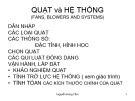
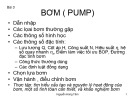

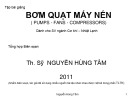
![Bài giảng Bơm - Quạt - Máy nén TS. Nguyễn Minh Phú [Mới nhất]](https://cdn.tailieu.vn/images/document/thumbnail/2021/20210705/xusong/135x160/5751625454994.jpg)

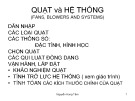
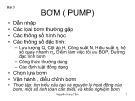







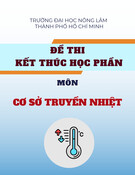

![Ngân hàng trắc nghiệm Kỹ thuật lạnh ứng dụng: Đề cương [chuẩn nhất]](https://cdn.tailieu.vn/images/document/thumbnail/2025/20251007/kimphuong1001/135x160/25391759827353.jpg)






